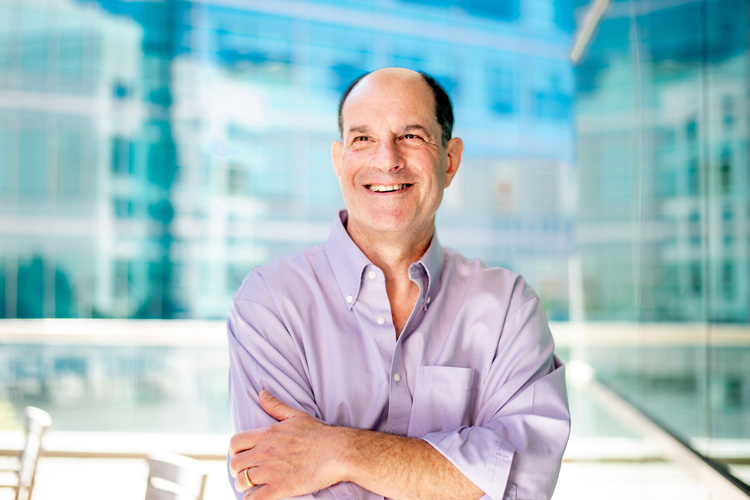Alumnus David Julius shares Nobel Prize for work on pain receptors
Even as a UC Berkeley graduate student in the '70s and '80s, David Julius was a standout

October 4, 2021
David Julius, one of today’s winners of the 2021 Nobel Prize in Physiology or Medicine, was a standout even as a graduate student at UC Berkeley in the 1970s and ’80s, according to one of his mentors, 2013 Nobel laureate Randy Schekman.
“Among our most talented Ph.D. students over many decades, David stands out for his originality, focus and determination,” said Schekman, a Berkeley professor of molecular and cell biology, adding that, “Unlike many people of his level of accomplishment, David is personally sweet and charming and generous in his treatment of others.”
Julius, now professor and chair of the Department of Physiology at UC San Francisco and the Morris Herzstein Chair in Molecular Biology and Medicine, shared the prize with Ardem Patapoutian, professor in the Department of Neuroscience at Scripps Research and a Howard Hughes Medical Institute investigator, “for their discoveries of receptors for temperature and touch,” according to the Nobel Committee 2021in Stockholm, Sweden.
Research on receptors for touch and temperature could lead to better pain killers and, potentially, new treatments for chronic pain. One of Julius’s former postdoctoral students, Diana Bautista, a Berkeley professor of molecular and cell biology and a member of the Helen Wills Neuroscience Institute, has extended this work to look in detail at itch, which is common in such disorders as eczema, and at the impact of chronic inflammation, in general, on the nervous and immune systems.
“David is an incredible scientist and mentor,” Bautista said. “He mentored many students and postdocs and trained us how to approach science using unbiased approaches, to ask the tough questions, and to give back to the scientific community. I am so lucky to have worked with him and am thrilled he received this well-deserved honor.”

David Julius ca. 1983, while still a doctoral candidate with Jeremy Thorner at UC Berkeley. (Photo courtesy of Jeremy Thorner)
Julius came to Berkeley in 1977 after graduating from MIT with a B.S. in life sciences and worked with both Schekman and Jeremy Thorner, now a professor emeritus of molecular and cell biology. His thesis focused on the mechanisms of peptide hormone processing and secretion in yeast, Saccharomyces cerevisiae. Schekman’s 2013 Nobel Prize in Physiology or Medicine was for work on the secretion process in yeast.
Thorner, with whom Julius primarily worked, is well known for his studies of transmembrane and intracellular signal transduction mechanisms, especially the understanding of how extracellular stimuli control cell growth and division, cell morphology and gene expression work at the biochemical level.
“I am just delighted and proud of all that David has accomplished,” Thorner said.
According to Schekman, Julius was the first to clone a gene responsible for endoproteolytic cleavage of a pro-hormone precursor, a gene that became the prototype for other proteases that are responsible for processing human hormones, including proinsulin.
After leaving Berkeley in 1984 for a postdoctoral position at Columbia University, Julius cloned the serotonin receptor gene — “a multi-year struggle, but he eventually succeeded with results that matched his brilliant Ph.D work,” Schekman said.
Julius’ work on serotonin receptors led, after his move to UCSF in 1989, to a focus on the receptors for touch and pain. He subsequently discovered temperature-sensitive ion channel receptors — so-called transient receptor potential (TRP), or “trip,” channels — that enable sensory nerve fibers to detect hot or cold temperatures.
“David’s work is never derivative,” said Allan Basbaum, a frequent scientific collaborator with Julius and the chair of UCSF’s Department of Anatomy. “It’s always groundbreaking, seminal.”